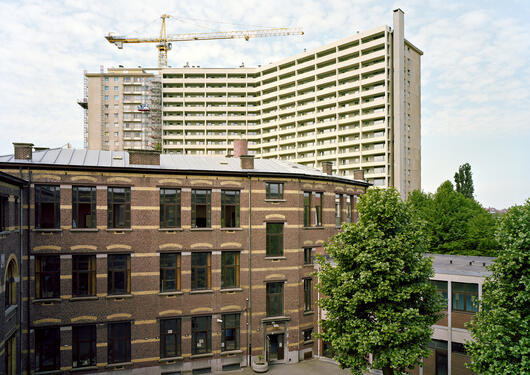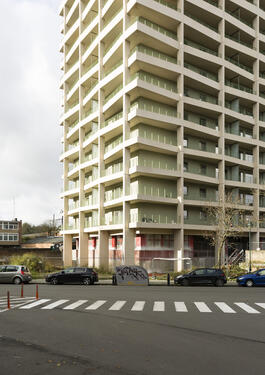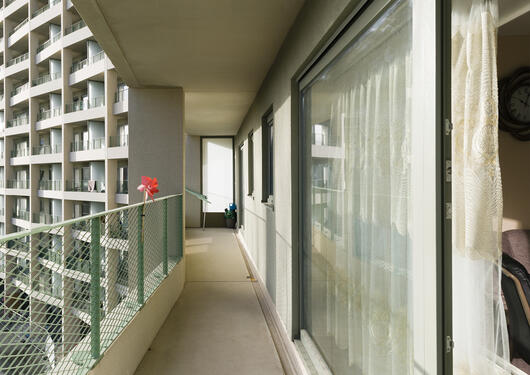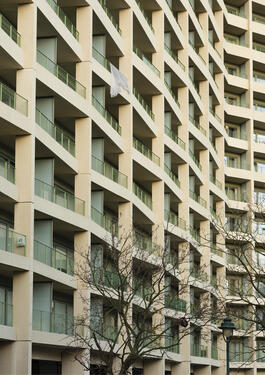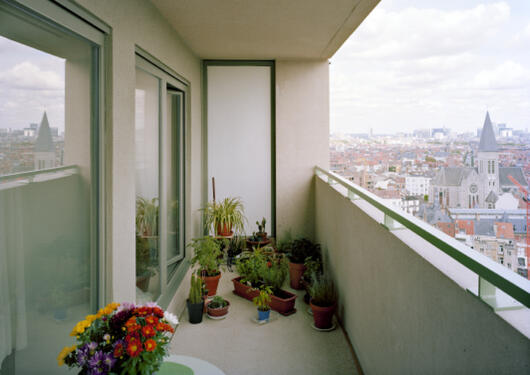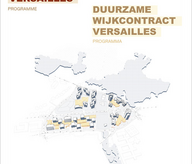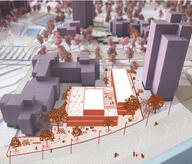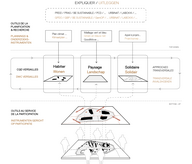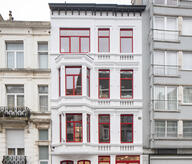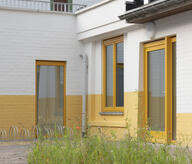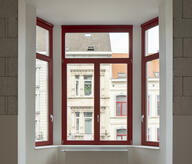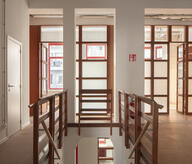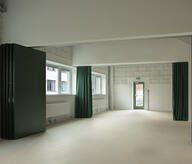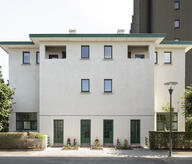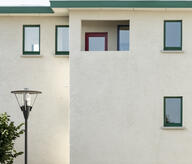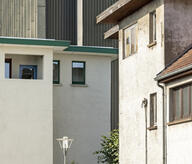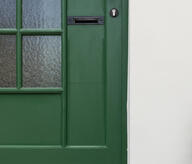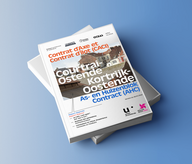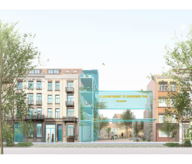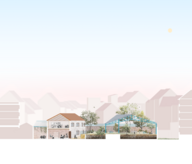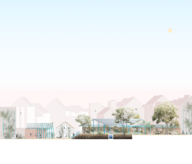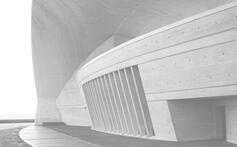The Goujons building suffers from the generalized stigmatization of housing towers. However, its particular form could bring about a radical change of image. In contrast to other buildings, the Goujons fold does not respond to its surrounding context, but rather submits to the landscape by following the old bed of the Senne. The building is actually part of what was a radical development project for the working-class and industrial district of Cureghem. The PPAS Goujons project, which was developed between 1968 and 1971, aimed to link the buildings around Square Albert 1er with the new constructions along the canal, in what was eventually to form a real waterfront. Although the Goujons operation was initially part of a modernist ensemble, it remained an isolated building. With its 18 floors, this tall building creates a break in the urban fabric. The renovation of the envelope, precipitated by the premature deterioration of the existing balconies, is an opportunity to create spacious terraces. Their structure evolves and is refined throughout the height of the building. The massive railings on the upper floors become thinner towards the bottom, with a progressive folding of their alignment. The ensemble marks the symbolic presence of the historic river of Brussels in the skyline of the Senne valley with a strong form. From below, the movement of the balconies anchors the building in its neighbourhood, giving it a plastic and historical meaning.
- Typology
- Logements multiples
- Status
- Construit
- Year of delivery
- 2025
- Client
- Foyer Anderlechtois - Anderlechtse Haard
- Total budget
- 20 000 000 €
- Constructed area
- 36 000 m2

